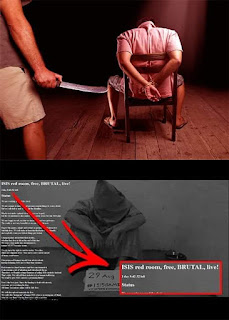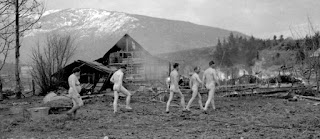James Henry Hancock - did he kill the wrong person during a temper tantrum?
54 year old James Hancock was born in Sheffield and in 1894 he moved to Cambridge, where two years later he met and went to live with Eliza Marshall in Water Street, Chesterton.
They frequently quarrelled and Eliza sought the help of her brother, Alfred Doggett, to protect her. Both James and Alfred were coke (as in fuel) dealers and this together with the strained domestic relationship made for a tense atmosphere when they came into contact.
A row developed between James and Eliza on the morning of Friday, March the 4th 1910 and as usual Eliza fetched her brother, who having calmed things down somewhat, proceeded to take over James' coke round for that day.
When Alfred returned in the late afternoon, James was in Eliza's house. James challenged Alfred in the stable over "stealing" his round and a fight broke out in which Alfred was stabbed in the neck with a carving knife. This being witnessed by Eliza. Alfred died in hospital soon afterwards.
Hancock was arrested and came to trial at the Spring Assizes in Cambridge on the 28th of May 1910. Mr. Justice Phillimore was the trial judge, the prosecution was led by Theobald Mathew and James was defended by Grafton Pryor.
The defence claimed that in the struggle Alfred must have fallen on the knife and that Hancock had no intention of killing him - therefore he was, at most, only guilty of manslaughter. Hancock had told witnesses after the killing that he was sorry that he had killed Alfred but had meant to kill Eliza. He repeated this to the police and also told them that it would be three weeks before "he got his neck stretched".
Toward the end of the trial medical evidence was admitted showing that as Hancock was left handed he could not have inflicted the single (fatal) stab wound if he had fallen under Alfred as had been claimed by his defence. The jury came back with the inevitable guilty verdict very quickly and Hancock was duly sentenced to death. There was no appeal.
At 8.00 a.m. on Tuesday the 14th of June 1910, Henry Pierrepoint carried out the death sentence within the execution shed at Cambridge Gaol, assisted by his brother Thomas. Hancock weighed 142 lbs. and Pierrepoint gave a drop of 7’ 3” on account of his “short and muscular neck and general muscular development”. Later that day, after the formal inquest, Hancock's body was buried in an unmarked grave within the prison walls, with the Chaplain, the Rev. Frank Hird, conducting a short burial service.
.jpeg)










Comments
Post a Comment